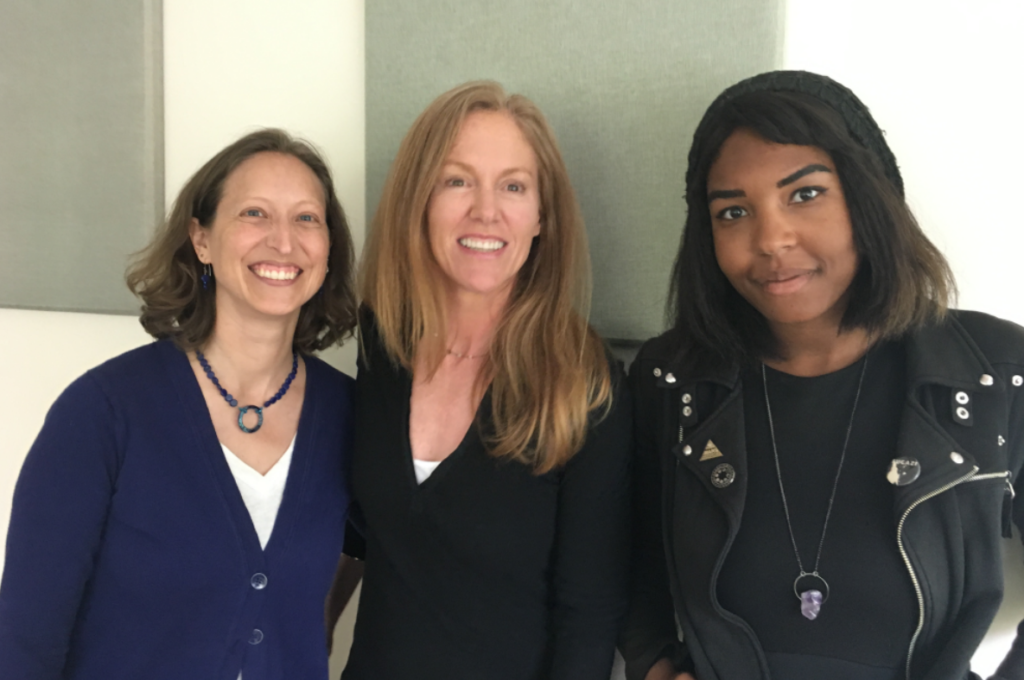In this two-part interview, bepress Product Managers Nicole Johnson, Ann Connolly, and Anne Stringer tell us about their approach to product design, give us insight into the product process, share about unusual desk accessories, and more.

Ann Connolly, Anne Stringer, Nicole Johnson
BP: Tell us a bit about your background and how it informs your approach to product.
NJ: I have a background in psychology and before coming to bepress in 2014 I worked in mental health and in libraries. I started as a Consultant before moving to the Engineering department. When we decided to grow our Product team I jumped at the opportunity as it seemed to be the perfect mix of Consulting Services and Engineering. It also has the added bonus of allowing me to use a bit of my psychology background when it comes to trying to understand the root needs of the majority of our users.
AC: Prior to bepress I taught philosophy and humanities for many years and over time discovered that I am a generalist. I am pretty much interested in everything. I didn’t know you could get a job in pretty much everything, but teaching philosophy and humanities is one, and being a Product Manager is another. I get to have a foot in development, business, support, marketing, customer base, everywhere. Every day is different, which I love. I started out at bepress on the Outreach team where I spent a lot of time talking to our customers, helping them take full advantage of our software. This was a great jumping off point for managing one of our products.
AS: Doing neuropsychology research back in the ‘90s, I was struck by the restricted access to literature searches, as well as the long delays in the journal publishing process. That got me interested in what was being done to improve the dissemination of academic content. When I saw an opening to work on the EndNote reference management program, I was intrigued and joined in. My time there as product manager and technical support manager gave me a solid foundation for understanding what it takes to develop and support a product. When I heard of the plan for bepress, I joined at the start. There were only four employees, so we were involved in every aspect of the company, doing product development, client support, sales, and engineering—experiences I continue to draw from as a product manager. It’s amazing how much this space, including the role of the librarians, has changed over the years.
BP: Describe the bepress approach to the product process.
AS: We start by identifying the challenge we want to tackle. It might be a customer pain point, a business development strategy, or a technical or infrastructure enhancement. We research the issue, gather feedback across departments and from clients, and lay out a roadmap for the initial release and further enhancements. This includes how we want to measure success along the way, which helps us to stay on course. After that, we get to work on implementation and roll out the feature according to our release plan, including evaluating and iterating as needed.
BP: How do you decide what gets built?
AC: What it ultimately boils down to are the new needs in the community. What can we add or improve such that users find it easier and more satisfying to use our products. Flash and glitter are fun, but ultimately they have to provide a solution to some need. Like our download maps: mesmerizing, but they also provide important information on institutional impact.
BP: Tell me more about the research phase.
NJ: Research includes user interviews and market and community assessment. The goal of the research phase is to make sure we understand the critical requirements of the feature as well as additions that would be valuable in future iterations.
BP: What role do customers play?
NJ: A big one! They are users of the product and are invaluable during many stages of the product process, starting from initial research and through the first round of implementation, which can take the form of pilot and beta testers. Without our customers to validate and use our features, there would be no product process.
Stay tuned for the second part of our interview, coming next Tuesday.